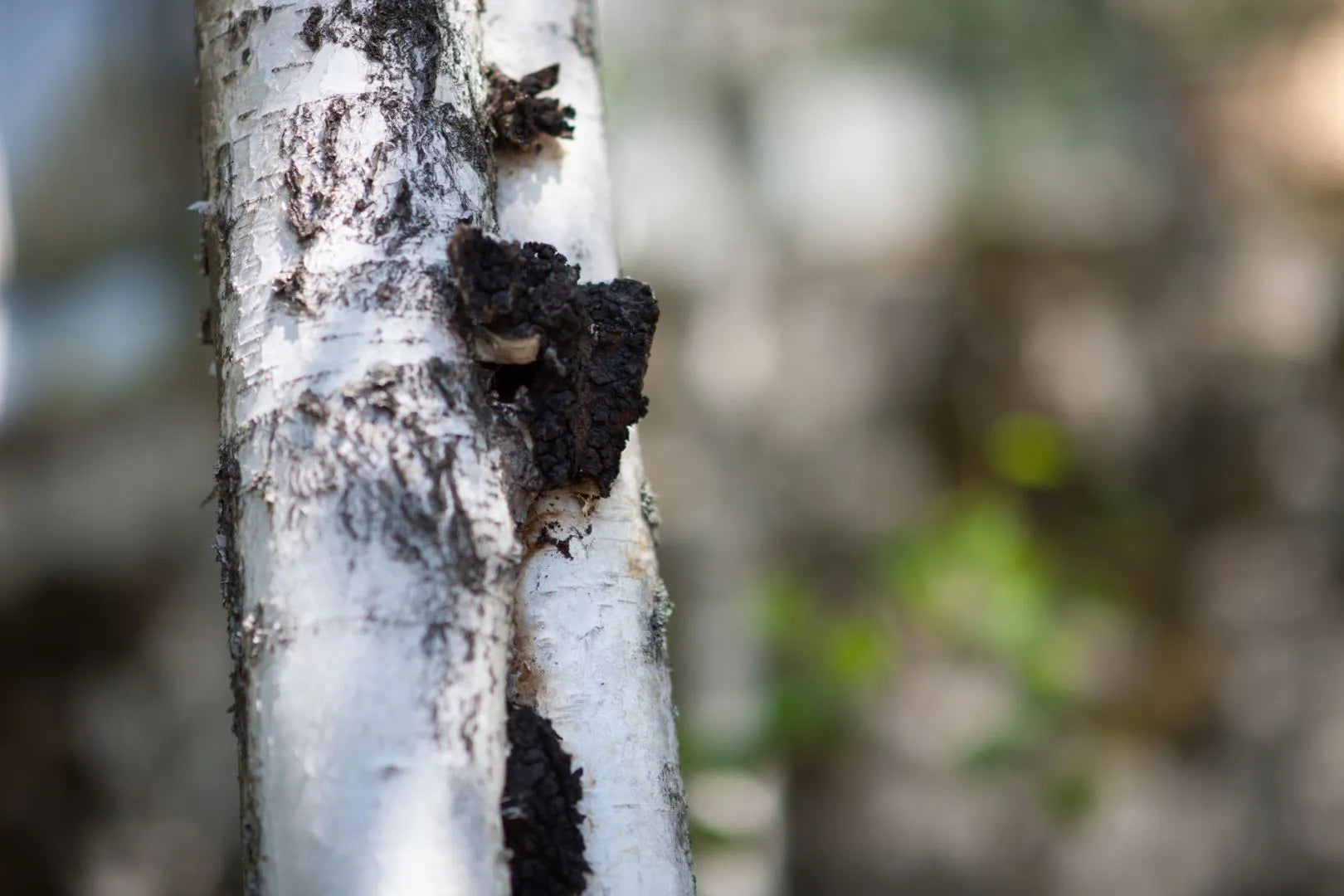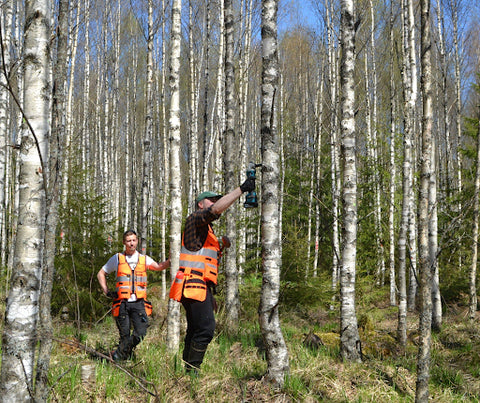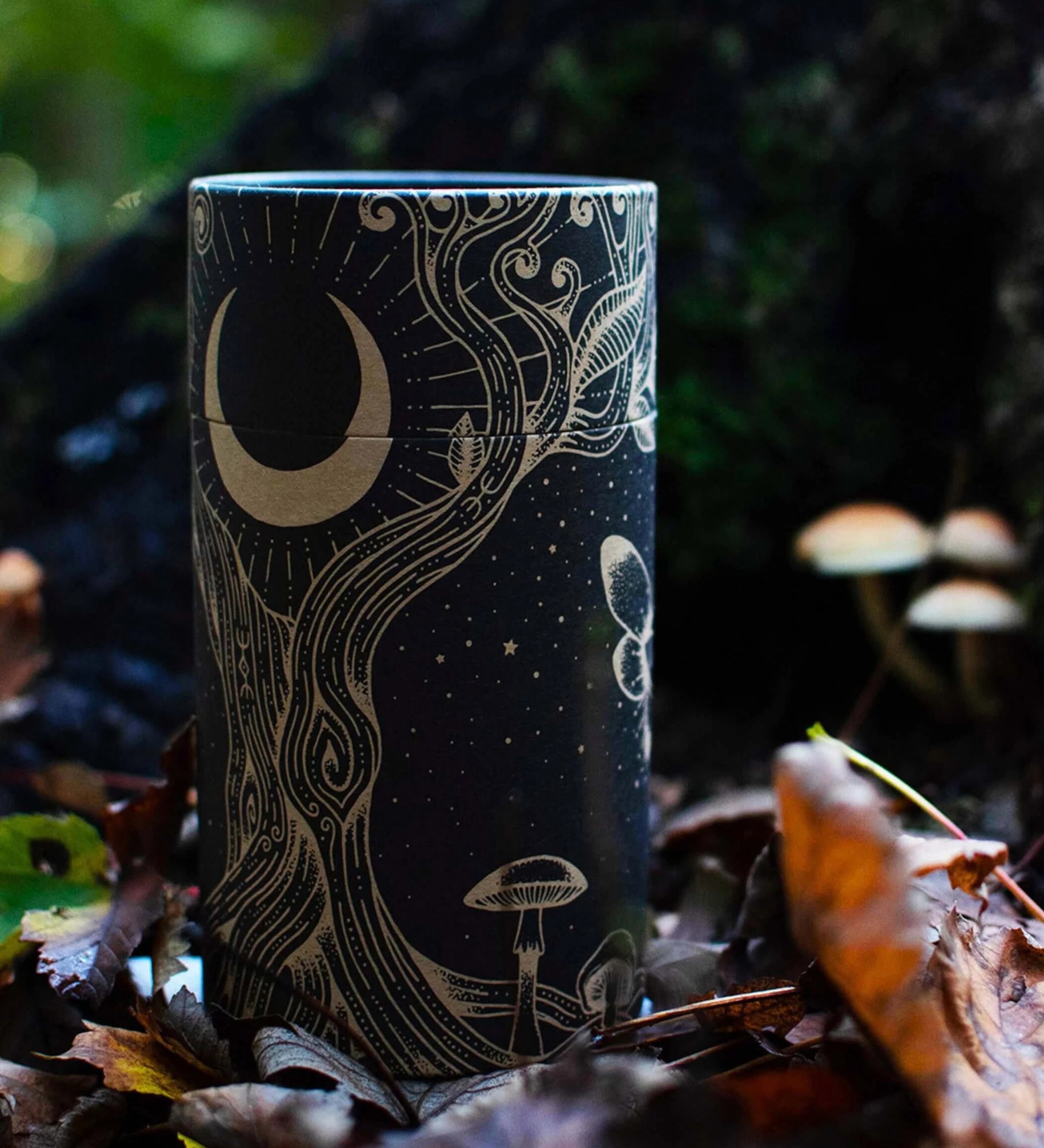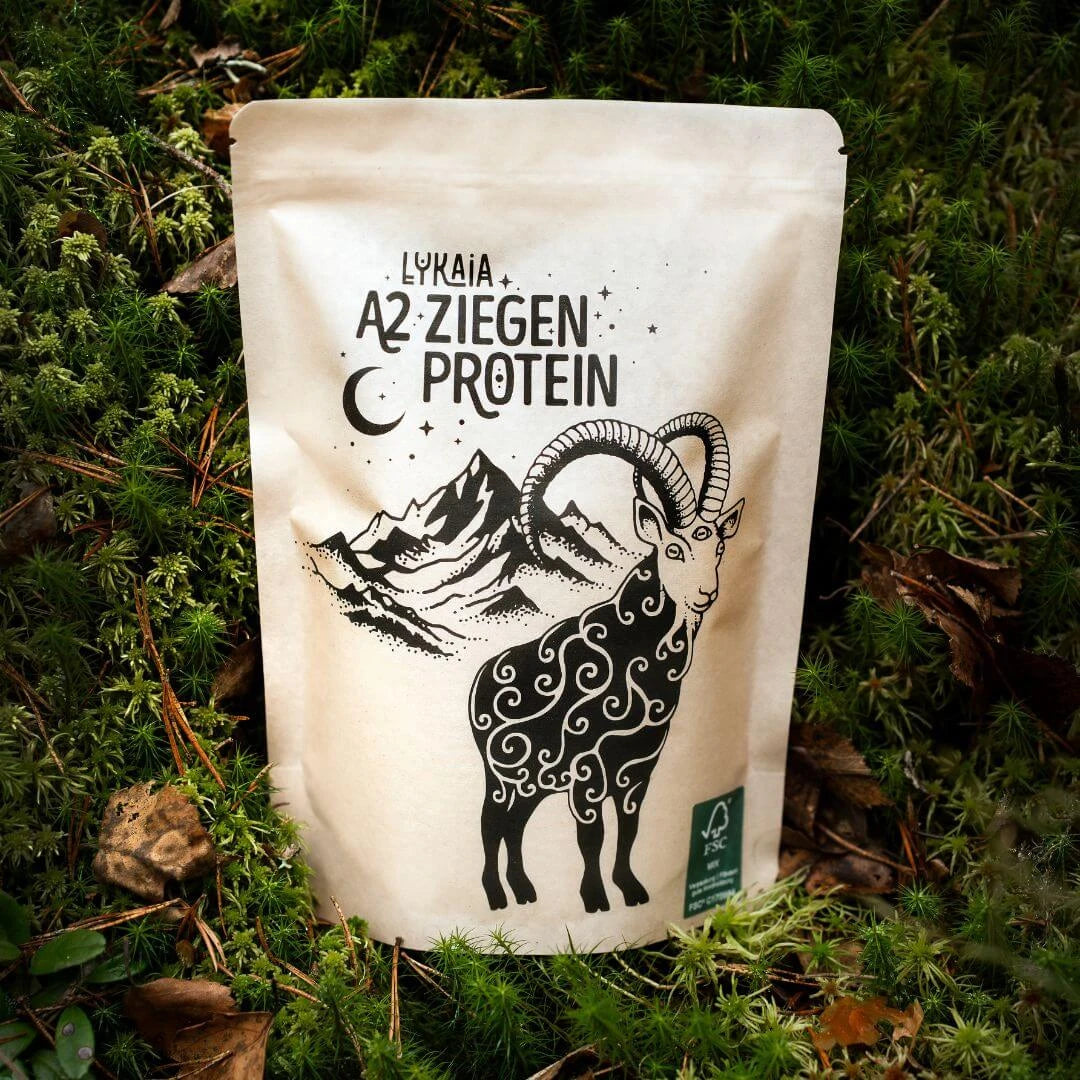How our Chaga saves Finnish forests

written by Robin Dören
Chaga - origin and cultivation
On the birch trees in deep Lapland it stands out as a black ulcer: the crooked Schillerporling , also known as Chaga or by its Latin name Inonotus Obliquus, grows here in symbiosis with the trees for up to 25 years .
In response to the mycelium of the fungus, the wood of the birch forms a so-called sclerotium , i.e. a hardened survival form. The hostile environment stimulates the fungus to produce a wide variety of substances in order to build up the necessary resistance to these harsh conditions. These substances accumulate concentrated in the sclerotium over the years.
A cup of chaga can contain the substances that have protected the mushroom against UV radiation and changes in the atmosphere and soil for up to 25 years across all seasons. Chaga is one of the most melanin-rich foods in the world . The enrichment occurs over such a long period of time that even different phases of the sun's activity are reflected in the content of the dark molecule.
The legitimate question now arises as to how a mushroom with such a long growth phase can be made available in larger quantities, because Chaga cannot be easily cultivated in substrate bags in your own home like other mushrooms.
To answer this question, you first have to realize that Finland consists of 80% forests . That's 23 million hectares of the cleanest forests with officially the best air quality in the world. The total occurrence of the fungus in Scandinavian forests alone is estimated at several million tons . This not only means huge amounts of naturally occurring chaga, but also a lot of forestry.
And that's exactly what the Finnish mushroom dealer we trust took advantage of.
As the world's largest supplier of Chaga, he has developed a unique concept:
The regenerative mushroom and wood industry
Instead of sawing down the trees, they are inoculated with Chaga spores. This ensures a continued supply and replaces the chaga taken from nature. There are two advantages for forest owners: on the one hand, chaga farming promises a greater profit than timber harvesting and, on the other hand, it contributes to a healthy forest climate.

Inoculation of birch trees with Chagas spores (image material from Kääpä Biotech)
This is because commercial Finnish forests are usually “thinned”. This means more sunlight enters the forest and accelerates growth. To do this, injured, crooked or other "imperfect" birch trees are sawn off and taken out of the forest to be processed into paper and other products.
The result: there is hardly any dead wood left in the forest .



Chaga growth phases ( image material from Kääpä Biotech)
Why is it important to leave dead wood in the forest?
If dead wood is removed from the forest, the ability to retain water, the mineralization of the soil and the biodiversity in the forest deteriorate. Microorganisms have less living space and fewer mushrooms grow in the forest, which serve as a source of food and mineralizers. The ability to store CO2 is also greatly reduced.
Instead of sawing down the imperfect birch trees, they are inoculated with Chaga. Since chaga is a parasitic fungus, it will eventually lead to the death of the tree. This thins out the forest naturally and creates an economical alternative and an incentive to leave the dead wood in the forest.

( Illustration by Kääpä Biotech )
The positive effect of Chagas can be increased by planting other mushrooms nearby that further utilize this dead wood.
The result is more habitats for pollinators and other small creatures. In addition , nutrients and moisture are retained in the soil and the effects of drought are reduced.
Our manufacturer also offers additional insurance for the forest owners who participate in the Chaga plantation project and assumes responsibility for buying back the harvested Chaga mushrooms. According to Finnish experience, the net productivity of one hectare of birch forest is approximately €900-1550 per year over a period of 20 years. The total productivity during this period for an average forest is approximately €25,000.
A 100% growth guarantee is also given. This means that if the Chaga has not grown after 2-3 years, a new one is planted free of charge and a quality control is carried out every 2 years.
( Video rights: Kääpä Biotech )
How to Harvest Chaga Correctly
There are a few things you should pay attention to when harvesting Chaga:
- Only part of the mushroom is harvested
- The tree is not damaged during harvest
- The mushroom is not harvested from a dead tree
- No wound closure agent is used when pruning the trees
- Common sense and respect for what nature offers us
- And above all: consideration of the ecosystem on a micro level, ie microorganisms.
Chaga spores spread through the air. A fruit-bearing tree can release millions of spores into the atmosphere and travel hundreds of kilometers. One chaga can infect new trees across an entire state. This has been proven by scientists through air samples in our atmosphere. So if chaga doesn't grow on birch trees in an area, the spores will be present, but the conditions in that particular ecosystem may be unfavorable.
By purchasing our Chaga Elixir , you are supporting an innovative, sustainable concept. Our manufacturer has managed to create an economic argument for leaving more wood and dead wood in the forest, which forms the basis for healthy forests. Instead of using the wood itself economically, the resulting mushrooms are sold.
If you want to learn more about the health benefits of Chaga, read our little Chaga Guide .
How can capitalism and environmental protection be reconciled?
Modern society is largely based on the exploitation of nature. Even in the Middle Ages, huge areas of forest were cleared to operate coal kilns for blacksmiths, to build houses, palisades, weapons and boats and also to make room for agriculture. This significantly shaped today's landscape in Germany back then.
The economic argument for felling trees was greater than leaving them standing , especially since the level of knowledge and technical possibilities hardly allowed anything else. Cutting down a tree resulted in the highest possible short-term value.
The topic can also be well illustrated by shark hunting . 100 million sharks are killed by the fishing industry every year. Whether for shark soups in Asia or for other shark products such as shark oil (which can be found in many cosmetics) or fish-based fertilizer (which often contains shark as an ingredient). The economic incentive here is simply greater than leaving the animals in the sea.
In modern capitalism, there must be the greatest possible economic incentive for environmental protection. For sharks and other marine animals, this can be done, for example, through tourism. This is a unique opportunity brought by social media.
It not only creates the economic argument to leave the animals in the sea, but also to take care of their health as best as possible. Returning tourists who spend a lot of money diving with sharks are a sustainable source of income for the entire country.
What forests and seas have in common
The Chaga harvest in Finland works according to a very similar principle. Social media can be used to draw attention to the many benefits of Chagas and open up a market. The economic argument for leaving dead wood in the forest for chaga is better than removing the wood.Very similar to the sharks in the sea, which are important for its health in their special ecosystem and ultimately for the planet by producing carcasses, the Chaga also keeps its birch forest in a healthy state by producing dead matter.
As long as there are people who buy Chaga products, there is an alternative source of income for forest owners who choose this type of regenerative forestry . These are exactly the measures we need in 2023. You can point fingers and appeal to morality, but ultimately the biggest lever for change is still money.
That's why it's so important that you choose sustainable products, because only when the manufacturers of our food, cosmetics, clothes and other products realize that sustainable products sell much better will there be a change.
0 comments








